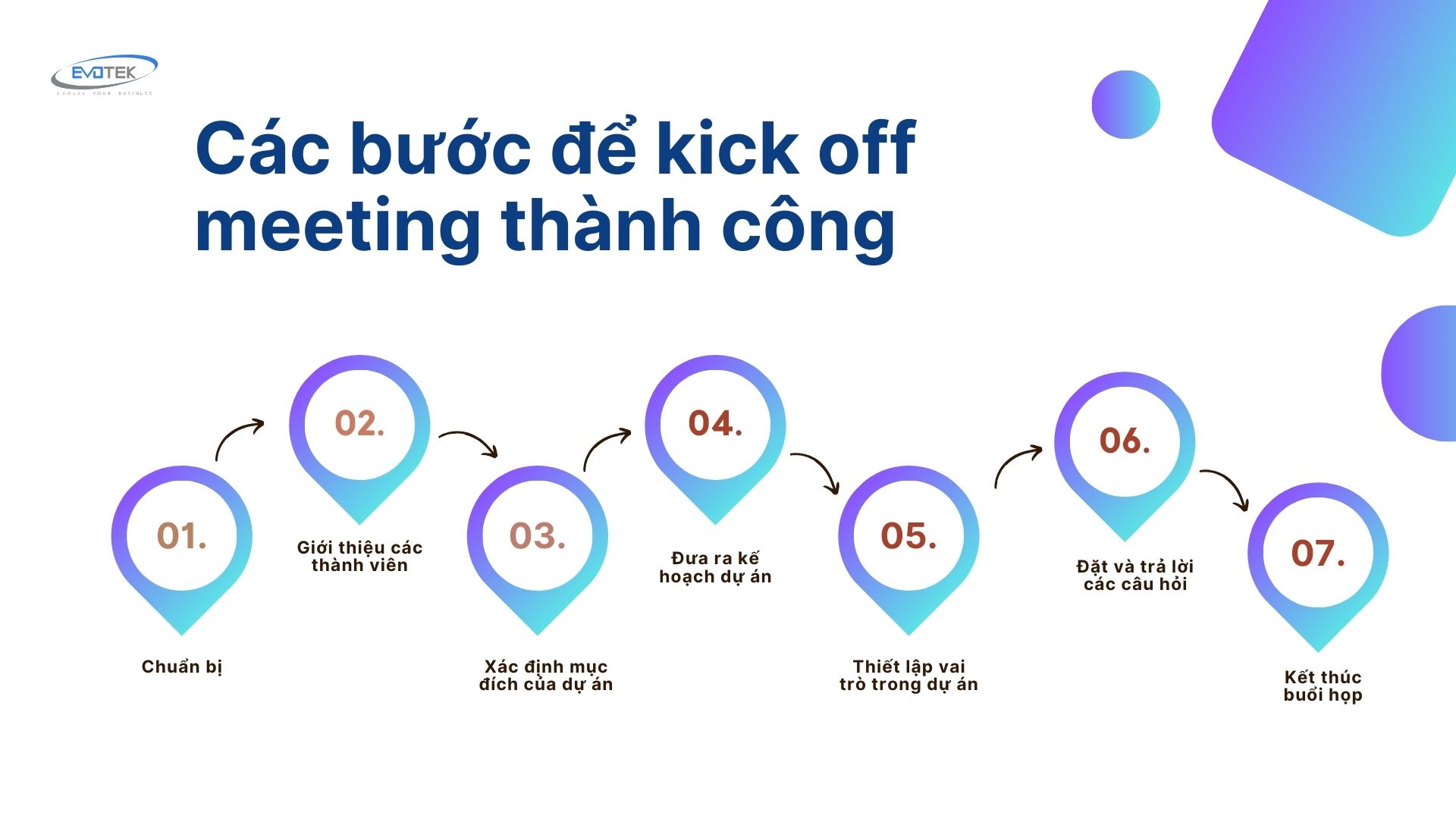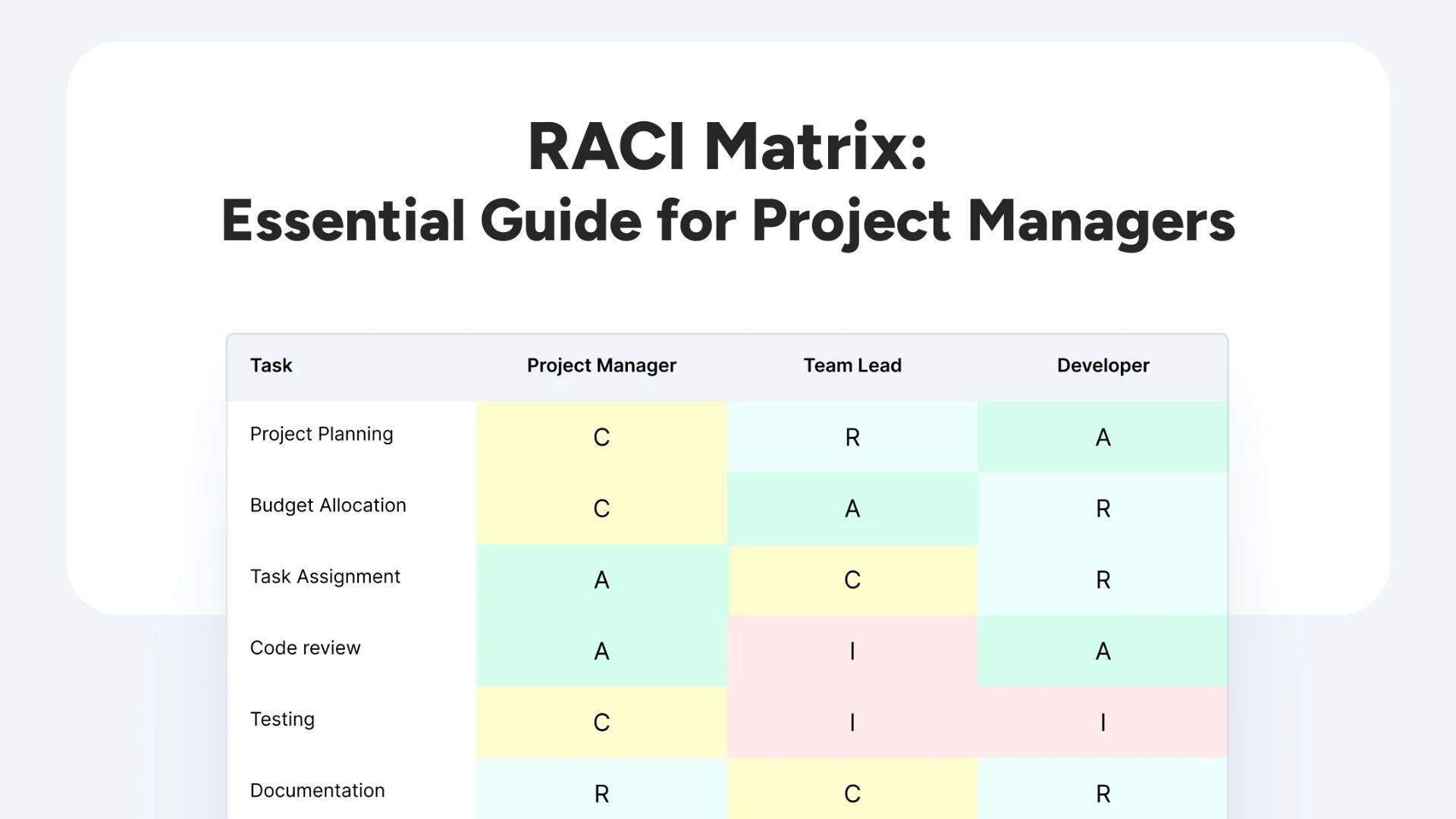According to research conducted by the Blekinge Institute of Technology, the project kick-off meeting is a crucial step in the process of integrating a new software outsourcing partner. This meeting serves to clearly define the project’s objectives, roles, and limitations, ensuring that all involved parties are on the same page. By establishing this alignment early on, the project can commence with confidence, increasing its likelihood of success.
In this article, Evotek aims to provide clarity on the purpose and process of a kick-off meeting. Steps to ensuring a successful kick-off meeting include outlining project goals, identifying key milestones, and establishing effective communication protocols.
What is a kick-off meeting?
It’s a gathering between a software outsourcing firm and their client, typically held at the beginning of a new project. This meeting occurs after the planning phase and signifies the start of the implementation phase in project management.
During the kick-off meeting, all members of the project team and the client collaborate to finalize essential project details. These include:
- Software project plan: A comprehensive overview of the project, detailing tasks and methodologies.
- Project objectives: Clear articulation of the specific goals aligned with client requirements.
- Product requirements: Defining the necessary specifications before product delivery.
- Project timeline: Establishing a timeline for each phase of the project.
- Team composition: Identifying roles and responsibilities of each team member.
For smaller projects, a single kick-off meeting suffices. However, for larger projects with multiple phases, it’s common to hold a kick-off meeting at the start of each phase.
Additionally, for long-term projects, multiple kick-off meetings may be necessary to realign the team with any new directives provided by the client.
Attendees at the Kick-off Meeting
All individuals involved in the project must participate in the kick-off meeting. This includes members of the outsourcing business’s project team as well as representatives from the client company. The key participants typically include:
- Team Managers (Leaders): Individuals leading the teams involved in the project.
- Team Managers (Leaders): Individuals leading the teams involved in the project.
- Project Team Members: Employees of the outsourcing business involved in the production and processing of products, such as developers, testers, and business analysts.
- Customers and Project Sponsors: Representatives from the company that has entrusted the project to the outsourcing business.
Purpose of the Kick-off Meeting
The primary objectives of holding a kick-off meeting for a project are:
- Agree on Project Scope, Goals, and Milestones: Ensure that all stakeholders have a clear understanding of the project’s scope, objectives, and key milestones.
- Clarify Expectations and Responsibilities: Clearly define the roles, responsibilities, and expectations of each project member to prevent misunderstandings and scope creep later on. This will help avoid misunderstandings that could lead to the scope of work becoming larger later on.
- Identify and Address Potential Issues: Identify and discuss any risks or challenges that may arise during project implementation, and propose strategies to prevent or resolve them.
- Foster Strong Relationships Between Stakeholders: Enhance cooperation and mutual understanding among all participants involved in the project by facilitating interactions and building positive relationships. Create opportunities for parties to interact, exchange and build good relationships.
By conducting a kick-off meeting, all parties can start the project with a shared understanding and commitment, which ultimately increases the likelihood of project success.
Benefits of kick off meeting
Benefits of Project Kick-off meeting include but are not limited to:
- Facilitates Introductions: Enables all members to become acquainted with each other, fostering teamwork and collaboration.
- Clarifies Project Goals: Ensures that all participants understand the project’s objectives, aligning everyone towards a common purpose.
- Defines Roles and Responsibilities: Clearly outlines the tasks and duties of each relevant party, reducing confusion and enhancing accountability within the project team.
- Generates Stakeholder Buy-in: Engages key stakeholders early on, gaining their commitment and support, which increases the likelihood of project success.
- Establishes Understanding of Project Objectives and Management Plan: Provides an overview of the project’s objectives, scope, schedule/milestones, budget, assumptions, and constraints, ensuring everyone is on the same page regarding project parameters.
- Encourages Communication: Offers an opportunity for all members to ask questions, seek clarification, and voice concerns, promoting open communication and addressing potential issues early on.
Types of Kick-off Meetings:
Project-Wide Kickoff Meeting: Held at the start of a major project, bringing together all stakeholders, such as managers, implementation teams, and customers. The aim is to ensure unified understanding of project goals, scope, and implementation plan. Some of the most popular are:
- Project-Wide Kickoff Meeting:
- Held at the launch of a comprehensive new project.
- Bring together all stakeholders such as managers, implementation teams, customers, etc
- The purpose is to ensure the entire project is unified in terms of goals, scope and implementation plan.
- Phase Kickoff Meeting:
- Held at the start of a new phase in a project.
- Focus on the goals, tasks, and plans for that period.
- Helps ensure a smooth transition between stages.
- Team/Module Kickoff Meeting:
- Held when starting a new module/work group in the project.
- Focus on issues related to the scope, work and schedule of that module/group.
- Helps ensure coordination between teams/modules in the project.
- Client Kickoff Meeting:
- Held at the beginning of cooperation with a new customer.
- Focus on customer requirements, expectations, and expectations.
- Helps build good relationships and common understanding with customers.
Above are the types of kick off meetings in an outsourcing project. Choosing the appropriate type of kickoff meeting depends on factors such as the scale, scope, and structure of the specific project.
Steps to successfully kick off meeting

1. Preparation:
In order to ensure a successful kick-off meeting, the outsourcing business must have a clear understanding of the purpose and process of such meetings. They should compile detailed information necessary for the meeting. Depending on the project’s nature and scope, the outsourcing business should provide a preparation checklist to the customer, specifying the required information and allowing ample time for preparation. Essential contents to include are:
- Introduction to the project and its rationale
- Project objectives
- Project scope
- Milestones for progress
- Project budget
- Quality expectations
- Project team and stakeholders
- Communication plan
- Identified project risks
- Assumptions and constraints
- Any other pertinent project-related details
- Question and answer
Introduction of Members:
Introducing all participants at the onset of the kick-off meeting is essential. This step ensures that everyone present understands each member’s role and responsibilities, fostering relationships and mutual understanding among the attendees.

At the outset of the meeting, the host should allocate time to introduce each participant, including members of the outsourcing team. Beyond merely stating names and titles, it’s crucial to outline key details about each person’s role and responsibilities within the project. This might involve highlighting individuals in charge of technical aspects, customer representation, or those involved in decision-making processes.
Introducing participants serves not only to acquaint everyone with the project team but also fosters opportunities for networking and relationship-building among attendees. This step holds particular significance, especially when collaborating with external partners, as it cultivates cohesion and cooperation throughout the project’s execution.
Following these introductions, the host can encourage all attendees to briefly introduce themselves and outline their respective roles. This gesture helps establish a convivial atmosphere, putting everyone at ease and encouraging active participation in the meeting.
3. Determine the Project’s Purpose:
Clearly articulating the project’s purpose is paramount for ensuring all involved parties grasp the project’s objectives and rationale.
The person chairing the meeting needs to clearly present the specific problems that the outsourcing project aims to solve. This could be the need to develop a new feature, improve existing system performance, or enhance scalability. The purpose must be specifically defined, measurable and consistent with the overall strategy of the organization.
In addition to the main purpose, it is necessary to identify the sub-goals or lower-level goals that the outsourcing project aims to achieve. For example, a secondary goal might be to increase page load speed by 50% or reduce bounce rate by 20%. Identifying these goals will help ensure the project is on track and meets the specific needs of the organization.
Develop a Project Plan:
Once the project’s goals and objectives are clearly defined, the subsequent step involves crafting a comprehensive project implementation plan.
The meeting leader should outline the primary phases of the project, encompassing analysis, design, development, testing, and deployment. Within each phase, it’s imperative to identify significant milestones, such as completing design tasks or deploying software to production environments. These milestones should be specific, measurable, and accompanied by clear deadlines. For example, complete requirements analysis by May 15, complete interface design by June 30, etc.
In addition, it is necessary to agree on a process for monitoring and reporting progress against identified milestones. It is necessary to clearly define the responsibilities of each member, including the outsourcing team, in monitoring and reporting progress. If the project does not achieve milestones as planned, timely corrective measures should be discussed.
5. Establish Roles within the Project:
Clarity regarding roles and responsibilities is paramount for project team members, particularly if the team comprises individuals who have not previously collaborated or includes external partners. Defining roles and responsibilities at the outset sets the stage for effective collaboration throughout the project’s duration.
If roles and responsibilities are not adequately clarified during the kickoff meeting, it may be beneficial to create and distribute a RACI chart as a follow-up action item. This chart delineates who is responsible, accountable, consulted, and informed for each task and decision within the project, ensuring clarity and accountability among team members.

Ask and Answer Questions:
An outsourcing project kick-off meeting serves not only as an information-sharing session but also as a forum for participants to ask and answer pertinent questions. This facilitates a comprehensive understanding of the project and everyone’s respective roles and responsibilities.
During the meeting, the host should actively encourage all participants, especially members of the outsourcing team, to pose any queries they may have regarding project requirements, constraints, roles, or responsibilities. For example, they may ask about specific project requirements, constraints and limitations, or the roles and responsibilities of each party.
Customers and outsourcing businesses need to take time to answer questions carefully and in detail. This not only helps alleviate concerns, but also creates trust and commitment from participating parties. Any questions that cannot be immediately answered should be documented, with a commitment to providing responses at the earliest opportunity.
7. End of meeting
Upon the conclusion of the project meeting, it’s imperative to ensure that all notes taken during the session are shared among team members involved in the project. If the meeting is held online, be sure to share the recording and/or transcription of the meeting. Finally, if there are any action items during the meeting, make sure they are recorded and assigned to the appropriate team members. This will help ensure that everyone is on the same page and can make progress toward the project goals.
In Conclusion
The kick-off meeting marks a significant milestone at the onset of a new project. It provides an invaluable opportunity for all stakeholders to collaborate, shape, and strategize the project together, thereby ensuring smooth implementation and attainment of project objectives.
At Evotek, when embarking on a development project for a client, we prioritize the initial kick-off meeting. This approach underscores our commitment to professionalism and is a key factor in earning the trust and appreciation of our clients.
To delve deeper into the nuances of developing a successful outsourcing project, we invite you to follow us and reach out to Evotek’s software experts for further guidance and assistance.

 日本語
日本語 한국어
한국어 Tiếng Việt
Tiếng Việt 简体中文
简体中文